

SAMP R

Beginner – HigH elementary



The STEAM Reading series helps young learners develop their reading skills while learning about fascinating topics related to science, technology, engineering, art, and math to increase their knowledge in these increasingly important areas.









The series consists of nine books arranged into three levels, with reading passages written in easy, carefully controlled language with lots of support with vocabulary and comprehension to help learners focus on the content, without struggling with the language.
Features
Interesting reading passages that engage learners while teaching them about key concepts in STEAM areas
Key concepts are explained in both fiction and nonfiction passages and demonstrated with hands-on projects and experiments to ensure learner engagement and understanding
Live-action videos for each experiment can be easily accessed by scanning the handy QR codes throughout the books to demonstrate step-by-step for young learners and show them what to do
Projects in each unit are specifically designed to build learners’ 21st-Century skills (Critical Thinking, Communication, Collaboration, and Creativity)
Level: Beginner to High Elementary (CEFR A1 – A2+)
Main Components
• Student Book (16 four-page units)
• Workbook (16 two-page units) – included book-in-book
Digital supplemental materials
• CLASSBOX (Digital teaching platform with LMS) for teachers
• BIGBOX learning app with Class Booster interactive activities for students
Downloadable supplemental materials
Answer key, MP3 audio, Word lists, Vocabulary tests, Worksheets (Dictation, Unscramble), Tests (Unit, Review, Midterm, Final), Lesson Plans, Syllabi, Teacher’s Guide, Tips & Ideas (Background knowledge passages)
STEAM Reading Beginner 1, 2, 3
STEAM Reading Elementary 1, 2, 3
STEAM Reading High Elementary 1, 2, 3

WARM UP & KEY WORDS
A simple question gets learners thinking about the topic. Key words are introduced with photographs.

READING
Units are paired and cover the same topic, first with an easyto-follow experiment, and then with an engaging short story.

PROJECT REFERENCE & WORD LIST
More detailed project instructions and a word list with written definitions and extra words is available for every unit in the appendix at the back of the book.
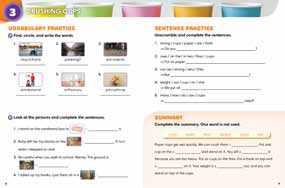
VOCABULARY PRACTICE, SENTENCE PRACTICE, SUMMARY
Additional activities in the included Workbook check students’ understanding of the vocabulary and sentence structures from the passage. A short summary activity checks students understanding of key ideas from the unit.
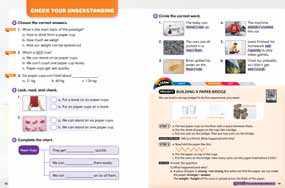
CHECK YOUR UNDERSTANDING
A range of activities checks comprehension of the story and understanding of the vocabulary.
STEAM PROJECT
A fun, interactive project gets students to apply what they’ve learned and practice 21st Century skills.
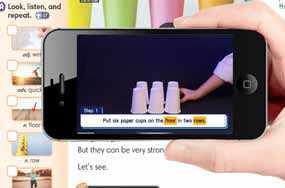
EXPERIMENT PROJECT VIDEOS
Each experiment project has an accompanying video. Learners can scan the handy QR code with a mobile device and see step-by-step instructions explaining what they should do in the experiment.

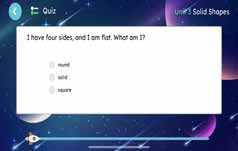
BIGBOX LEARNING APP with CLASS BOOSTER
Students can download the BIGBOX app on PC or their mobile device for more practice with interactive activities, including digital flashcards, comprehension and structure practice, and the experiment videos.
Beginner – BOOK 2

1 S E T A M
Title BUBBLING AIR / WC: 60
AcAdemic Objective Learn about air
vOcAbulAry air, touch, fill, plastic, syringe, bubble
SteAm PrOject Testing For Air
21st Century Skills: Critical Thinking, Collaboration Page 8
2 S E T A M
Title TONY’S BALLOON / WC: 86
AcAdemic Objective Learn about the properties of air
vOcAbulAry balloon, untie, try, feel, wind, around
SteAm PrOject The Dry Paper Experiment 21st Century Skills: Critical Thinking Page 12
3 S E T A M
Title MAGNETS PUSH AND PULL / WC: 88
AcAdemic Objective Learn about magnets and their poles
vOcAbulAry pole, north, south, opposite, build, tower
SteAm PrOject Exploring Magnets
Title NEW PENCIL CASE / WC: 80
4 S E T A M
AcAdemic Objective Learn about the uses of magnets
vOcAbulAry zip, pencil case, drop, shake, close, tightly
SteAm PrOject Find the Words 21st Century Skills: Critical Thinking Page 20
Title GROWING SEEDS / WC: 68
21st Century Skills: Critical Thinking Page 28 5 S E T A M
6 S E T A M
AcAdemic Objective Learn about seeds and how they grow vOcAbulAry kidney bean, cotton, place, temperature, bud, soil
SteAm PrOject Life Cycle of a Plant 21st Century Skills: Critical Thinking, Communication, Creativity Page 24
Title GROWING TOMATOES / WC: 83
AcAdemic Objective Learn how seeds grow into plants vOcAbulAry cherry tomato, taste, buy, plant, sunlight, water
SteAm PrOject Parts of a Plant
AcAdemic Objective Learn how soil is formed
Title HOW ROCKS BECOME SOIL / WC: 51
vOcAbulAry mountain, rock, large, sharp, edge, powder
SteAm PrOject The Soil Layers 21st Century Skills: Critical Thinking Page 32
Title THE MAGIC OF NATURE / WC: 84
21st Century Skills: Critical Thinking Page 16 8 S E T A M
21st Century Skills: Critical Thinking Page 36 7 S E T A M
AcAdemic Objective Learn more about the characteristics of soil
vOcAbulAry go hiking, hurt, rest, nature, break, piece
SteAm PrOject Soil Formation

Title THE SHAKING DRUM / WC: 86
AcAdemic Objective Learn about different kinds of sounds vOcAbulAry hear, believe, drum, hit, jump, move
SteAm PrOject Is the Sound You Hear Big or Small?
21st Century Skills: Critical Thinking, Communication Page 40
Title TICKING CLOCK / WC: 88
AcAdemic Objective Learn more about sound and how to measure it vOcAbulAry living room, clock, tick, laugh, measure, decibel
SteAm PrOject How Dangerous Are the Sounds We Hear? 21st Century Skills: Critical Thinking, Communication Page 44
Title DIFFERENT SHADOWS / WC: 62
AcAdemic Objective Learn about light and shadows
vOcAbulAry Shadow, dark, prepare, next to, different, objeC t
SteAm PrOject let’S Make a Sun CloCk 21st Century skills: CritiCal thinking, CoMMuniCation Page 48 16
Title STOP FOLLOWING ME! / WC: 77
SteAm PrOject Changing Shadow 21st Century skills: CritiCal thinking Page 52 11 S E T
AcAdemic Objective Learn more about shadows and light vOcAbulAry lake, follow, help, under, lie down, hide
Title GRAVITY PULLS / WC: 60
AcAdemic Objective Learn about gravity vOcAbulAry ground, gravity, bucket, poke, hole, fall
SteAm PrOject How Fast Do They Fall?
21st Century Skills: Critical Thinking Page 56
Title A FALLEN APPLE / WC: 80
AcAdemic Objective Learn more about gravity vOcAbulAry head, Earth, pull, fish, swim, pond
SteAm PrOject Paper Clip Gravity Experiment 21st Century Skills: Critical Thinking Page 60
Title MODERN FARMING / WC: 81
AcAdemic Objective Learn about farmers and farming in the future
vOcAbulAry farmer, feed, animal, machine, computer, robot
SteAm PrOject How Biotechnology Can Help Us Grow Healthy & Tasty Food 21st Century Skills: Critical Thinking, Collaboration, Communication Page 68 15
SteAm PrOject Help Bob 21st Century Skills: Critical Thinking, Collaboration Page 64
Title ROBOT PILL / WC: 81
AcAdemic Objective Learn about biotechnology
vOcAbulAry picture, smartphone, sick, pill, swallow, fix
BUBBLING AIR

Key WOrDS
a Look, listen, and repeat. 01
Warm-UP
What can you feel when you use a fan?
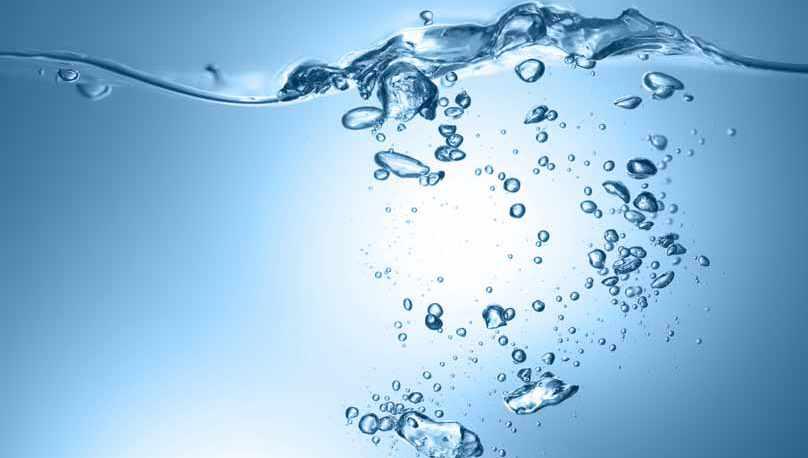






B Listen and number the words. 02


Listen and read. 03
Can we see air? Can we touch it?
We cannot see air. We cannot touch it either.
But air is all around us.
Let’s do a simple experiment. reaDing
Step 1

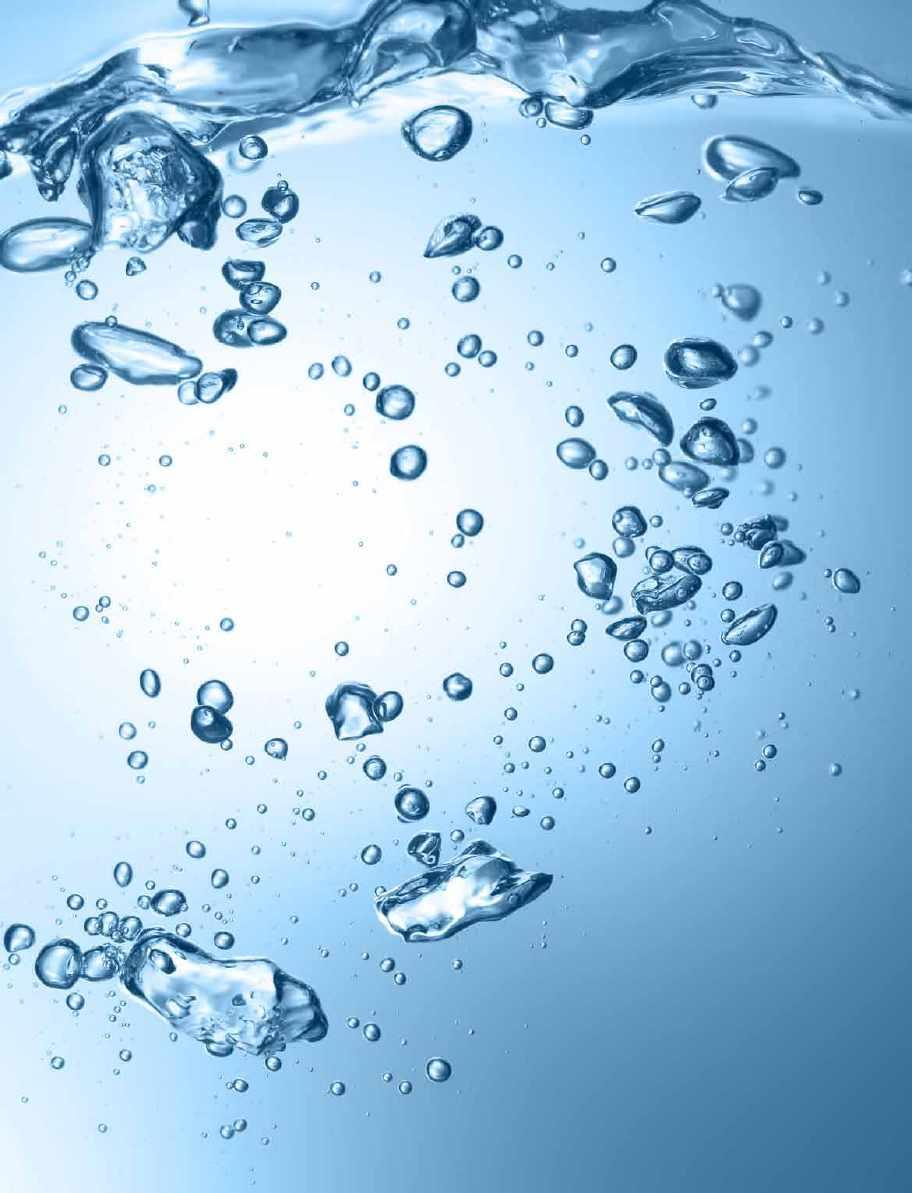

Step 2 Step 3

Put an empty plastic bottle in the water and push it down.
What happened in this experiment?
Bubbles came out from the bottle and the syringe. They made a bubbling sound.
Bubbles are made of air. Look around you. Where can you find air?
Air is all around us. It is what we breathe* and it keeps us alive. All living things need air to live. Air fills all empty containers.
Go to page 80 for the meaning of difficult words (*).
C Circle the key words in the reading.
D Read and choose.
1. You can’t see me. You can’t touch me. You need me to live. What am I?
2. I am a ball of air in water. What am I? plastic air bubble syringe
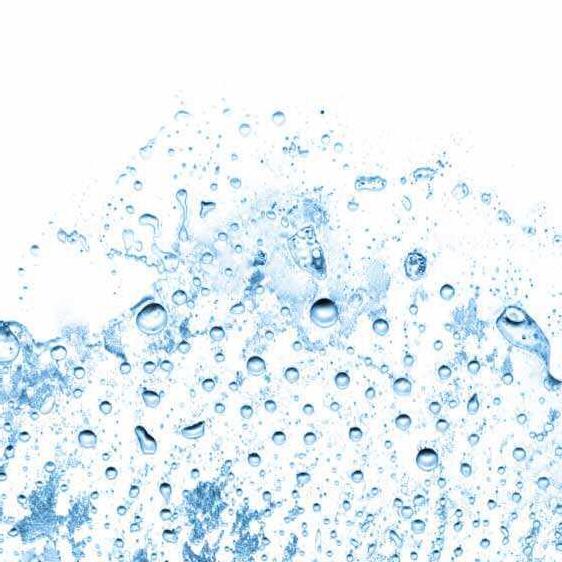
CHeCK yOUr UnDerStanDing
a Choose the correct answers.
1. What is the main purpose of the experiment?
a. To fill a bowl with water
b. To fill a bottle with air
c. To show the air around us
2. _____________ are made of air.
a. Plastics
3. Which is NOT true?
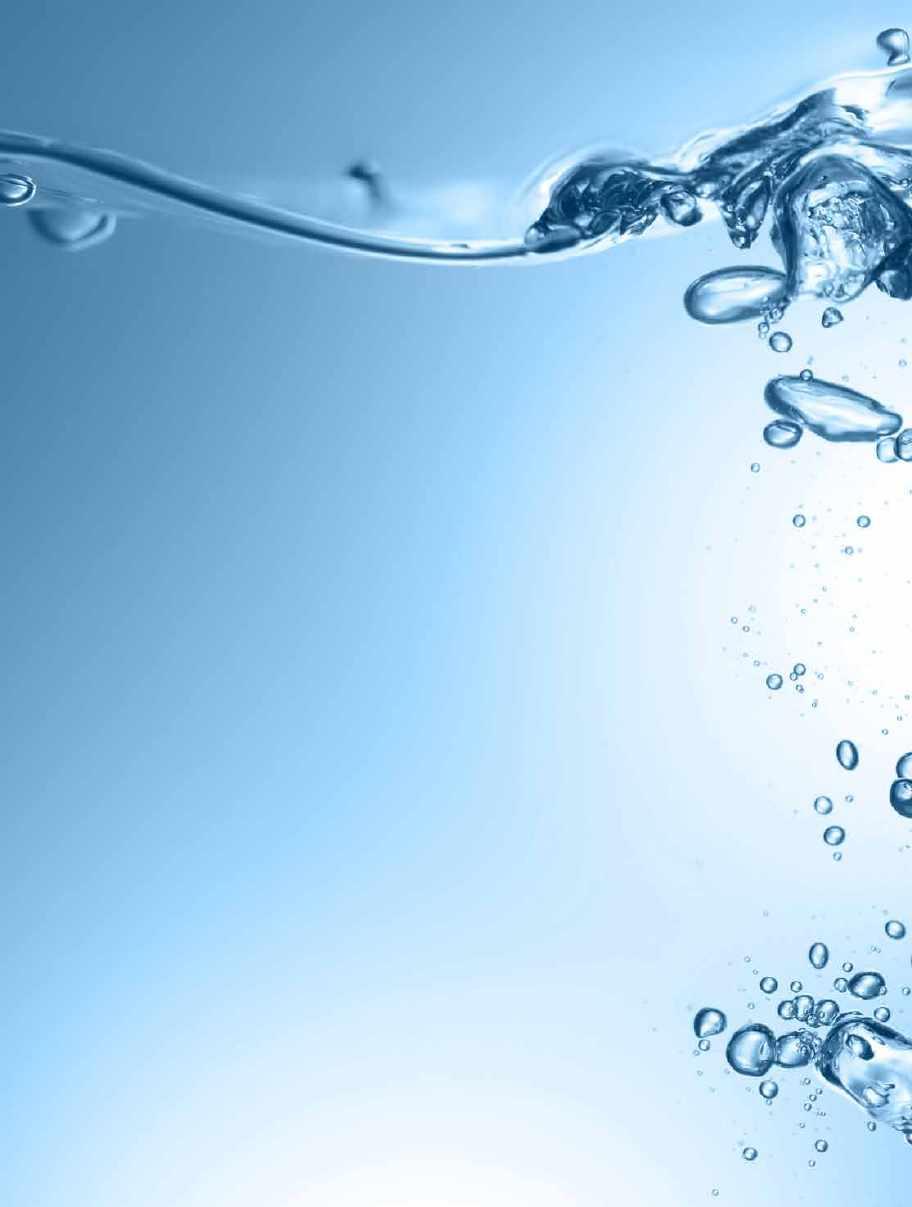
b. Bottles c. Bubbles
a. We cannot see air. b. We cannot touch air. c. We can touch air.
B Look, read, and check.
1.

2.

a. When you press down on the top of the empty syringe in the water, bubbles come out.
b. When you press down on the top of the empty syringe in the water, plastic comes out.
a. Air is all around us.
b. Air is not around us.
C Number the pictures in the correct order.

Bubbles come out of the syringe into the water.



Push down on the top of the syringe. Put a syringe into the water. Fill a large bowl with water.



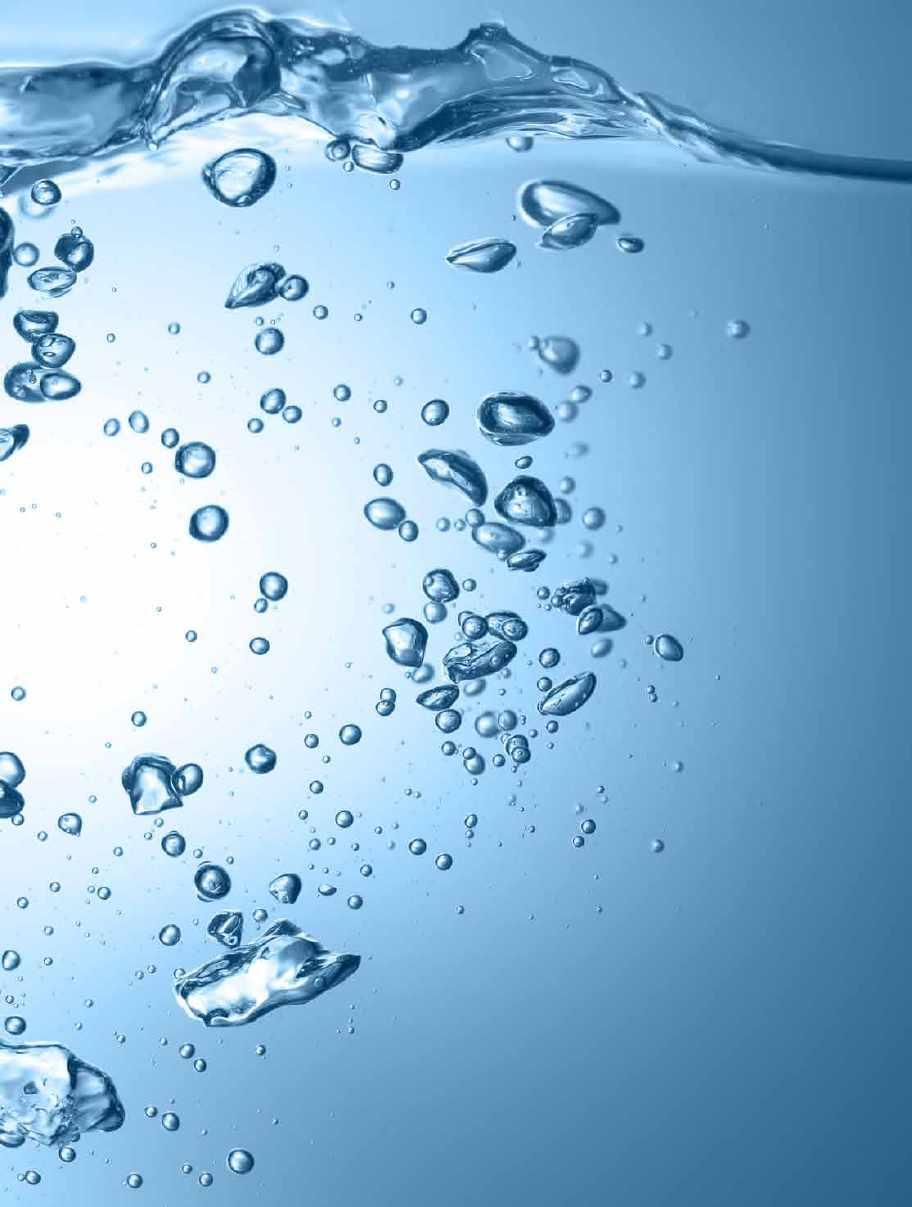
t TESTING FOR AIR
To do this experiment, you need:






Step 1 First, put the can bottom first into the bowl of water.
Critical Thinking Q. What can you see?
A. The can floats in the water. It goes / doesn’t go down into the water.
Step 2 Now, turn the can on its side and push it into the water.
Critical Thinking Q. What happens?
A. The water doesn’t go / goes into the can. There are / aren’t bubbles coming out of the can.
Collaboration Critical Thinking Q. Why does this happen?
A. The water in the bowl pushes out / in the air from inside the can. Things that look empty are really full of water / air.
BUBBLING AIR

a Write the letters for each word.






B Look at the pictures and




the

SentenCe PraCtiCe
Unscramble and complete the sentences.
1. all / is / us / around
Air ________________________________________.
2. in the water / and push it down / an empty plastic bottle
Put .
3. come / from / out / the bottle
Bubbles .
4. and / an empty syringe / the top / push down / into the water
Put .
5. made / a bubbling / they sound.
SUmmary
Complete the summary. One word is not used.
air bubbles fill plastic syringe touch
We fill a large bowl with water. Then, we push an empty 1. bottle into the water. 2. come out of the bottle. Now, we put an empty 3. into the water and push down the top. Again, bubbles come out of the syringe. They make a bubbling sound. We can’t 4. or see 5. , but it is all around us.
elementary – BOOK 2

24 2 Page 12 1
Title LIGHT TRAVELS / WC: 114
Academic Objective Learn about how light moves Vocabulary straight, flashlight, direction, target, toward, reflection
Reflecting Light
STEAM Project
Title THE BUS DRIVER / WC: 101
Academic Objective Learn more about reflection Vocabulary get on, crowded, get off, rearview mirror, front, stop
STEAM Project
Concave and Convex Mirrors 21st Century Skills: Critical Thinking
Title THE WATER CYCLE / WC: 106
Academic Objective Learn about the water cycle Vocabulary evaporate, condense, cycle, seal, decrease, increase
STEAM Project
The Water Cycle in a Bottle
21st Century Skills: Creativity, Critical Thinking
Title DISAPPEARED WATER / WC: 127
Academic Objective Learn more about the water cycle Vocabulary vacation, forget, become, cloud, high, again
7
21st Century Skills: Critical Thinking, Creativity, Collaboration 4 Page 20 3 Page 16 8
STEAM Project Why It Is Important to Save Water 21st Century Skills: Critical Thinking, Creativity, Communication
Title A RAFT OF STRAWS / WC: 124
Academic Objective Learn why things float or sink Vocabulary coin, raft, design, blueprint, buoyancy, upward
STEAM Project Make a Plastic Bottle Raft 21st Century Skills: Creativity, Critical Thinking, Collaboration, Communication
Title HOW DOES A SHIP FLOAT? / WC: 114
Academic Objective Learn more about buoyancy Vocabulary ship, Internet, search, force, be made of, huge
STEAM Project Build a Better Vehicle
21st Century Skills: Critical Thinking, Collaboration, Creativity
Title ICE FISHING / WC: 96
21st Century Skills: Critical Thinking, Collaboration S
Academic Objective Learn about salt and ice Vocabulary spray, stairs, ingredient, ice cube, make sure, degree
STEAM Project How to Make Ice Cream in a Bag
21st Century Skills: Critical Thinking
Title FROZEN / WC: 126
Academic Objective Learn more about the freezing point of water Vocabulary aunt, even, reply, ask, because, lower
STEAM Project An Ice-Melting Experiment
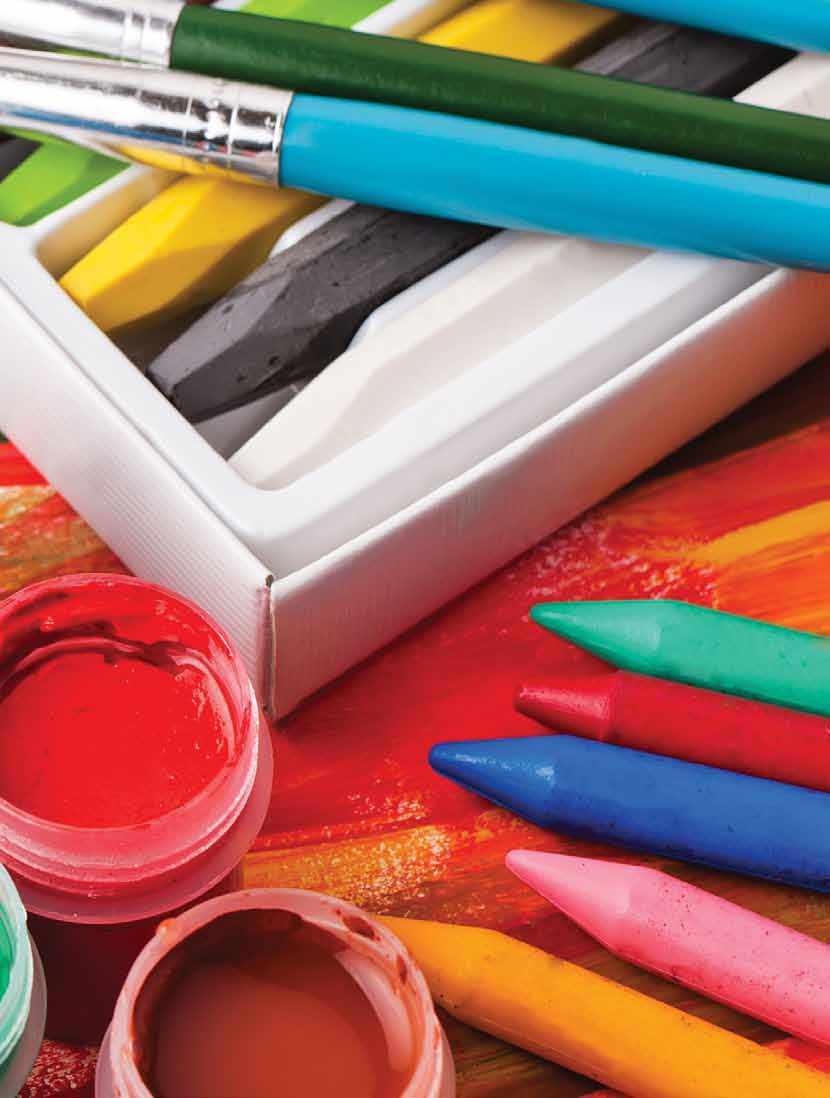
21st Century Skills: Critical Thinking S E T A M
S E T A M
Title THE POWER OF PULLEYS / WC: 98
Academic Objective Learn about pulleys and how to lift things easily Vocabulary lift, pulley, wheel, loose, wrap, distribute
SteAm Project How Pulleys Make Life Easier
21st Century Skills: Critical Thinking, Communication
Title INVENTIONS OF THE PAST / WC: 103
Academic Objective Learn more about pulleys Vocabulary fortress, electricity, easily, work, carry, need
STEAM Project More About Pulleys
Title A VOLCANIC ERUPTION / WC: 100
Academic Objective Learn about volcanoes and volcanic eruptions Vocabulary magma, volcano, erupt, lava, detergent, vinegar
STEAM Project Learn About Volcanoes
21st Century Skills: Critical Thinking
Title VOLCANOES: GOOD OR BAD? / WC: 113
Academic Objective Learn more about volcanoes Vocabulary worried, danger, cause, ash, surface, hot spring
STEAM Project Good and Bad Things About Volcanoes
21st Century Skills: Critical Thinking, Collaboration, Communication
Title THE FAULTS IN OUR EARTH / WC: 89
Academic Objective Learn about earthquakes Vocabulary crust, puzzle, crack, fault, spine, relax
STEAM Project Earthquake Experiment 21st Century Skills: Critical Thinking, Collaboration S E T A M
S E T A M
Title EARTHQUAKE SAFETY / WC: 127
Academic Objective Learn more about earthquakes Vocabulary grab, news report, fall down, turn off, power, elevator
STEAM Project Do During an Earthquake 21st Century Skills: Critical Thinking, Communication
Title MACHINES ALL AROUND / WC: 104
Academic Objective Learn about machines and mechanical engineers Vocabulary complicated, mechanical, industry, turn on, switch, fridge
STEAM Project Let’s Make Our Own Lift
21st Century Skills: Critical Thinking, Collaboration
Title UNDERWATER EXPLORERS / WC: 100
Academic Objective Learn about archaeology and underwater archaeologists Vocabulary important, archaeologist, dig, percent, item, underwater
STEAM Project Are You a Good Archaeologist?
21st Century Skills: Critical Thinking, Creativity, Communication
I will learn... more about buoyancy.
HOW DOES A SHIP FLOAT?
Key WOrDS
a Look, listen, and repeat. 16

ship


Warm-UP
Buoyancy pushes things up in water. What’s the force that pulls them down? It begins with “g.”
Listen and read. 18 reaDing

search


phr. be made of

Internet n. force adj. huge

Clara and Brian went to the beach. They saw a big ship in the water.
Brian said, “Clara, how can that big ship float?”
“I don’t know. Let’s check on the Internet .” They searched for how boats float.
Brian said, “It says it’s because the force of water pushes the ship up. It’s called buoyancy.”
B Listen and number the words. 17
“Yes, that’s right,” said Clara. “My smartphone says this, too. The big ship has lots of air in it. The ship is made of heavy iron. But the air makes it lighter.
“The iron and air are lighter than the water. So the ship floats!”
“Oh, I see!” said Brian. “That’s how that huge ship can float on water.”
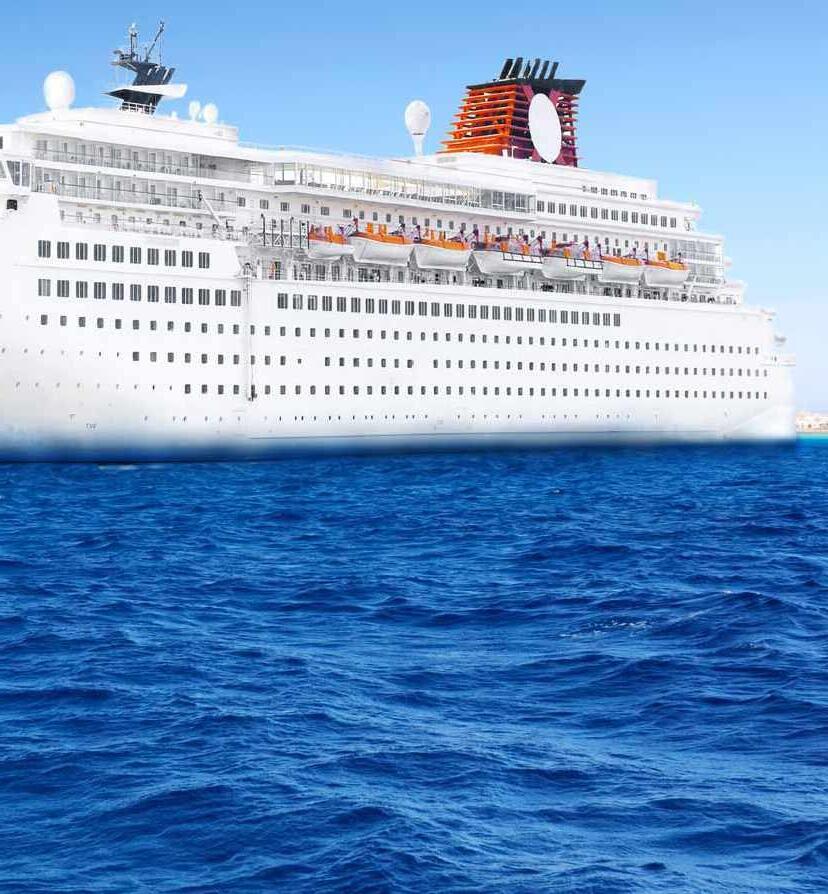
C Circle the key words in the reading.
D Read and choose.
1. What does search mean in the reading?
a. try to lose
b. try to find c. try to hit
2. Which is the opposite of huge?
a. big
b. high c. small
a Choose the correct answers.
1. What is the reading mainly about?
a. How to search for things on the Internet
b. How iron and air are heavier than water
c. How buoyancy keeps a ship from sinking
2. The __________ that is inside the ship is much lighter than water.
a. iron

b. air
c. force
3. Which of the following does a large ship NOT have in it?
a. Seawater
b. Air
c. Iron
B Check true (T) or false (F) for each sentence.
1. Clara’s smartphone said the air in a huge ship made it lighter than water.
2. There is a force in water that pushes ships up and keeps them from sinking.
C Complete the chart.
D Choose the best definition.
1. Internet
a. a place to hide information b. a place to find information
2. force
a. a power b. a movement
3. be made of
a. to be used to b. to be composed of
4. ship
a. a large boat made of iron b. a small car made of wood
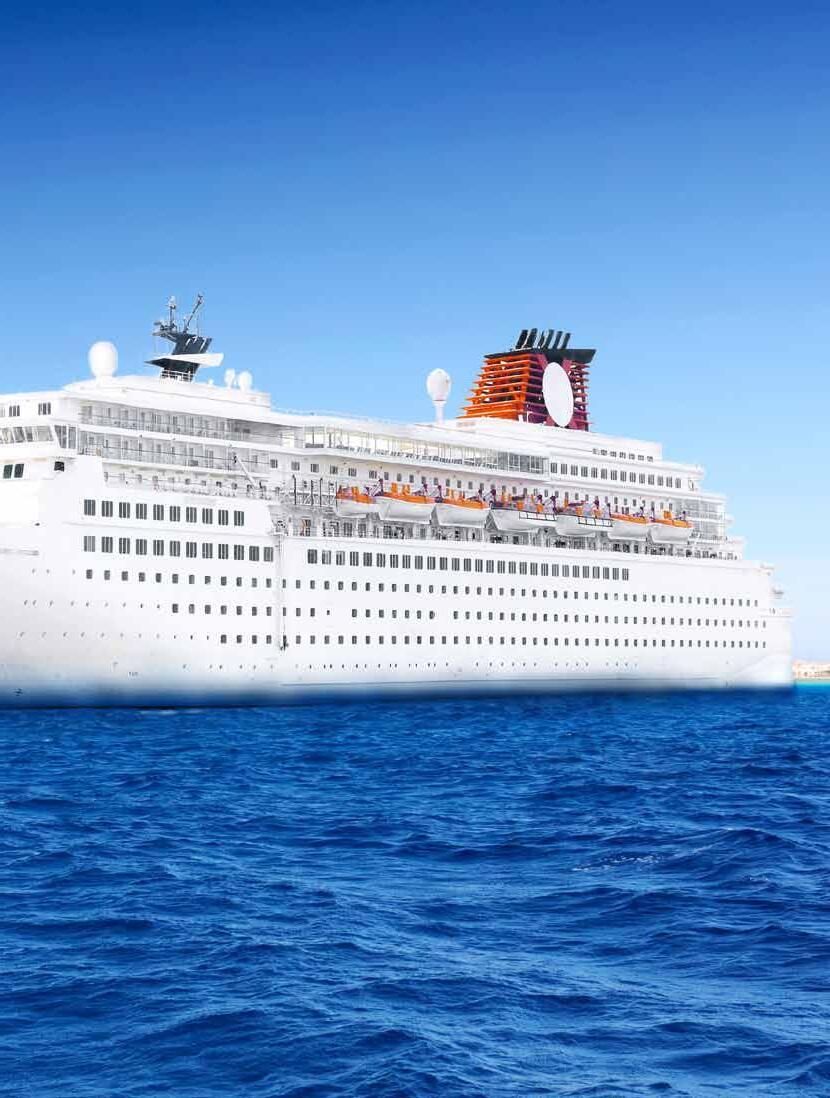
Step
t BUILD A BETTER VEHICLE*
1. What kind of vehicle is this?
car
airplane
2. Where does this vehicle operate*?












HOW DOES A SHIP FLOAT?
VOCaBUlary PraCtiCe
a Unscramble the word. Then write it.






B Complete the sentences with the words from the box. One word is not used.
1. This raft ______________ straws, so it easily floats on water.
2. Gravity, buoyancy, and magnetism are all ______________.
3. The ______________ finally reached the port.
4. The teacher told us to go on the ______________ and look for information about buoyancy.

Match the sentences and write.
1. They saw a • • can float on water.
2. Brian said, “Clara, how • • than the water.
3. My smartphone says this, too. • • can that big ship float?”
4. The iron and air are lighter • • The big ship has lots of air in it.
5. That’s how that huge ship • • big ship in the water. 1. ________________________________________________________ 2. ________________________________________________________ 3. 4. 5. ________________________________________________________
SUmmary
Complete the summary. One word is not used.
When Clara and Brian went to the beach, they saw a(n) 1. ship floating in the water. Brian wanted to know how the ship could float. They went on the 2. . They 3. for how boats float. Brian said there is a(n) 4. ___________ that pushes the ship up. Clara said her smartphone also said that big ships can float because they have lots of 5. in them. The ships are very heavy because they are made of 6. , but the air makes the ships lighter.
HigH elementary – BOOK 2

Title BROKEN CHOPSTICK / WC: 171
Academic Objective Learn about light refraction
21st Century Skills: Critical Thinking, Communication, Creativity 4 Page 20 3 Page 16 8 Page 36 7 Page 32 6 Page 28 5 Page 24 2 Page 12 1 Page 8
Vocabulary lawn, pass, slow down, enter, refract, slightly, position, focused
Changing Arrows
STEAM Project
Title TALL BOY, SHORT LEGS / WC: 158
Academic Objective Learn more about light refraction
21st Century Skills: Critical Thinking, Collaboration S
Vocabulary entire, swimming pool, dive, funny, refraction, brain, line, come in
STEAM Project The Reappearing Coin
21st Century Skills: Critical Thinking
21st Century Skills: Critical Thinking S
Title PRESSURE CHANGES, VOLUME CHANGES / WC: 176
Academic Objective Learn about the volume changes of gases
Vocabulary certain, apply, plunger, lightly, change, repeat, base on, no matter
STEAM Project
Fountain Bottle Experiment
21st Century Skills: Critical Thinking
Title A BAG OF CHIPS / WC: 168
Academic Objective Learn more about air pressure
Vocabulary pack, chip, in case, proud, swell, burst, inflated, suspicious
STEAM Project Atmospheric Pressure and Altitude
21st Century Skills: Critical Thinking S
S
Title TWO DIFFERENT LENSES / WC: 174
Academic Objective Learn about different types of lenses
Vocabulary lens, bend, convex, concave, on the other hand, transparent, laser pointer, beam
STEAM Project What Can a Magnifying Glass Do?
Title TELESCOPES, MICROSCOPES, AND MORE! / WC: 160
Academic Objective Learn more about lenses and how they are used
Vocabulary observatory, space, telescope, explain, gather, in detail, binoculars, microscope
STEAM Project Uses of Lenses
Title THE FLOW OF ELECTRICITY / WC: 145
Academic Objective Learn about electricity and how it flows
Vocabulary electricity, electrical, circuit, electric current, wire, connect, conductor, complete
STEAM Project
An Electrical Circuit
21st Century Skills: Critical Thinking
Title ALL OF THE LIGHTS / WC: 154
Academic Objective Learn more about how electricity flows
Vocabulary get ready, thread, light up, join, conduct, positive, negative, already
STEAM Project
Electrical Conductors and Insulators
21st Century Skills: Critical Thinking
S

Title MORE BATTERIES / WC: 133
Academic Objective Learn more about electrical circuits and batteries Vocabulary series, connection, parallel, remaining, brightness, voltage, strong, last
How Can We Make Holiday Lights?
SteAm Project
Title ELECTRICITY EVERYWHERE / WC: 169
Academic Objective Learn more about things that use electricity Vocabulary heater, run, plug, outlet, throw, grocery store, electronics, overheat
STEAM Project
Why and How Should We Save Electricity?
21st Century Skills: Critical Thinking, Creativity, Communication
Title SEA BREEZE AND LAND BREEZE / WC: 181
Academic Objective Learn about the difference between a land breeze and a sea breeze
Vocabulary daytime, sea breeze, land breeze, lamp, heated, movement, heat up, create
STEAM Project
Flowing Air
21st Century Skills: Critical Thinking
Title FLYING A KITE / WC: 172
Academic Objective Learn more about a land breeze and a sea breeze
Vocabulary take a trip, kite, above, from A to B, check out, dinner, go out, flow
STEAM Project Make a Kite
21st Century Skills: Creativity, Communication
21st Century Skills: Critical Thinking S
S
S
Title THE HEIGHT OF THE SUN / WC: 156
Academic Objective Learn about the height of the sun and the seasons Vocabulary differ, season, steep, angle, shallow, once, heat energy, rise
STEAM Project The Sun and The Seasons
21st Century Skills: Critical Thinking, Communication
Title THE LENGTH OF THE DAY / WC: 166
Academic Objective Learn about solar altitude
Vocabulary set, bright, solar altitude, during, at an angle, revolve, maximum, minimum
How to Read a Climate Graph
STEAM Project
Title ELECTRICITY FROM THE SUN / WC: 159
Academic Objective Learn about changing sunlight into electricity
Vocabulary imagine, coal, climate change, solar, effective, plan, implement, essential
STEAM Project How Solar Panels Work
21st Century Skills: Critical Thinking, Communication
Title WEB DEVELOPER / WC: 158
21st Century Skills: Critical Thinking, Communication 12 Page 52 11 Page 48 16 Page 68 15 Page 64 14 Page 60 13 Page 56 10 Page 44 9 Page 40
Academic Objective Learn about developing a website Vocabulary website, crash, manage, scroll, sell out, annoying, technical, load
STEAM Project What Can You Do on the Internet?
21st Century Skills: Critical Thinking, Creativity, Communication
Key WOrDS
a Look, listen, and repeat. 19


THE FLOW OF ELECTRICITY

Warm-UP
What happens when you plug in a lamp?








Listen and read. 21 reaDing

How does electricity flow? First, it needs an electrical circuit . The electricity flowing through the circuit is called an electric current . Can we make a circuit to turn on a light bulb? Prepare a battery, wires, and a light bulb. Let’s make two different circuits.
Step 1
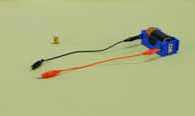
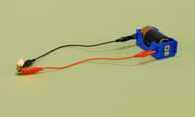
2
B Listen and number the words. 20
Get two wires. Connect one end of each wire to each pole of the battery (+/-).
Connect the other ends of the wires to the light bulb. What happens?
Circuit 2
Step 1

Get two wires. Connect one end of two wires to one pole of the battery.
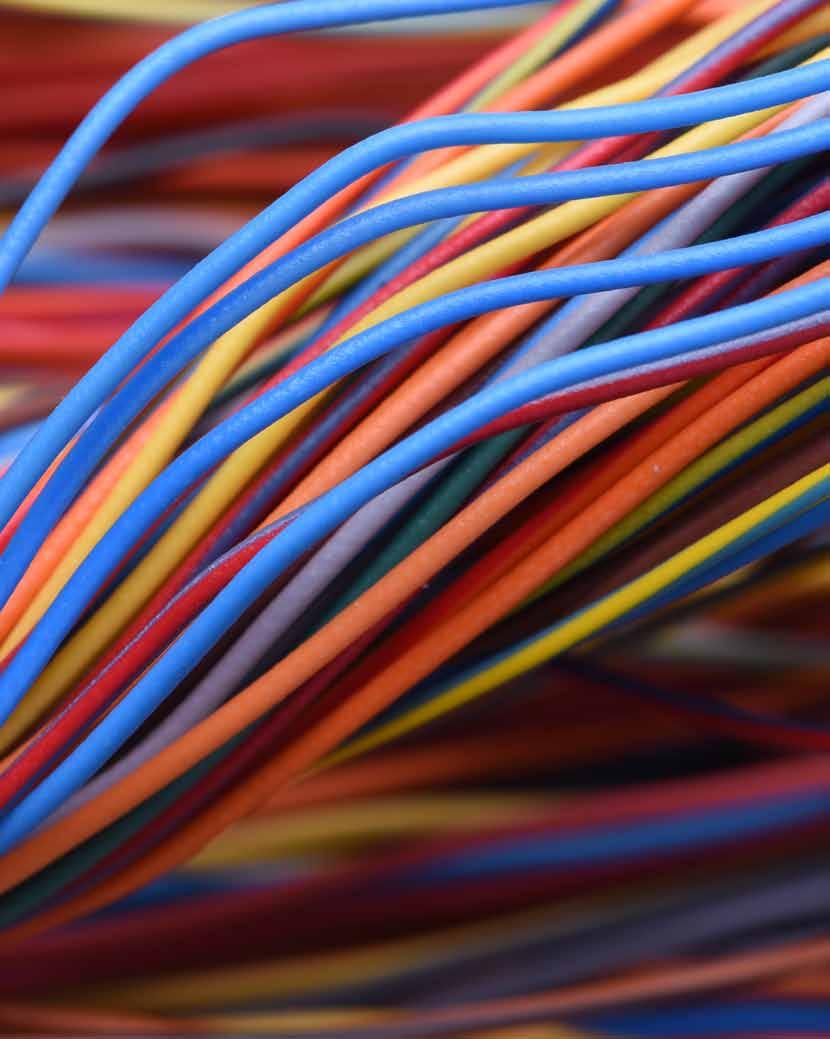
Step 2
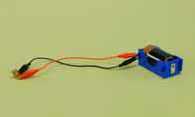
Connect the other ends of the wires to the bulb. What happens?
When did the bulb light up? It only turned on in Circuit 1.
Why do you think that was?
An electrical circuit needs certain things.
1. The battery, wires, and bulb should all be connected.
2. The electrical conductors should be connected to both poles of the battery.
3. The light bulb should be connected to both conductors.
In Circuit 2, only one pole of the battery was connected.
The bulb didn’t turn on because the electrical circuit wasn’t complete.
The electricity couldn’t flow.
Take the battery, wires, and light bulb again. What other circuits could you make with them?
C Read and choose.
1. What does It mean in the reading?
a. the bulb
b. the battery
2. What does complete mean in the reading?
a. unfinished
b. complicated
c. the wire
c. finished
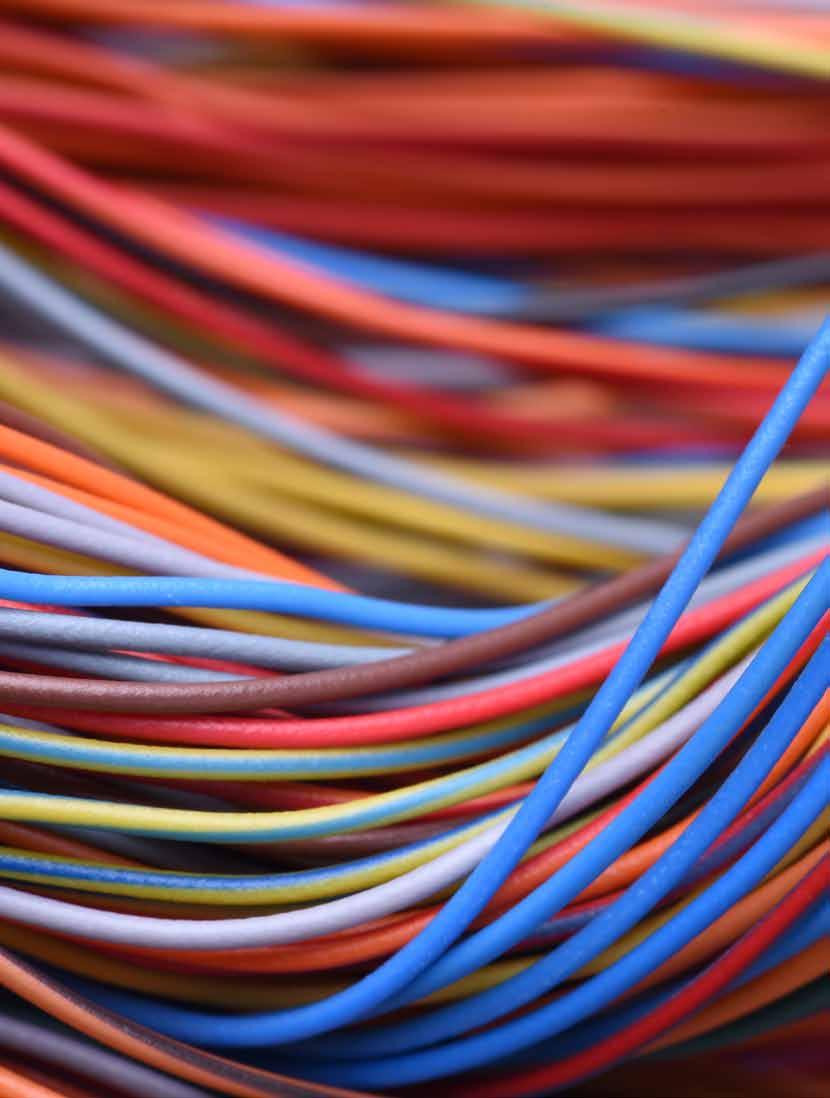
a Choose the correct answers.
1. What is the reading mainly about?
a. How electricity unplugs a circuit
b. How electricity flows through a circuit
c. How electricity flows through a battery
2. The second circuit didn’t work because ___________.
a. we did not connect the two wires to the bulb
b. we connected the two wires to each pole of the battery
c. we did not connect the two wires to the two poles of the battery
3. Which of the following does electricity NOT do?
a. Connect two poles
b. Flow through a circuit
c. Travel through conductors
B Check T for true or F for false. Correct the false statements.
1. Electricity flows through a bulb into an electrical circuit.
2. The electrical circuit is complete when one pole is connected.
C Put a check () for correct sentences and a cross () for incorrect sentences about electricity.






D Complete the sentences.
complete conductor connect electric currents electrical wires
1. Make sure you _________________ the two wires, one to each pole.
2. I have a(n) _________________ set of books.
3. Copper is an excellent _________________ of electricity.
4. Be careful with that plug! _________________ can be very dangerous.
5. You need _________________ to make a circuit and allow electricity to flow.
6. The television and microwave oven are _________________ devices.

An electrical circuit is a connection of electrical components* that electricity flows. Electrical circuits power bulbs and other electrical objects in your home. complete conductors electric current electricity pole wires
Step 1 Critical Thinking Complete the sentences using the word bank below.
Step 2
A battery is the most important component. It is the power source. It provides energy for 1. ____________ to flow.
Electricity flows through 2. ____________. They are made of good 3. ____________ like copper.
The electricity that flows from the battery to the bulb and back is called a(n) 4. ____________. It flows from the positive 5. ____________ to the negative pole.
When the switch is open, the circuit is cut and the current does not flow. When it is closed, the circuit is 6. ____________ and electricity flows.
Name the elements of the circuit.
7 THE FLOW OF ELECTRICITY

VOCaBUlary PraCtiCe
a Match and write.
1. wires

2. connects

3. electricity

Many years ago, there was no , so people had to read by candlelight.
Our school library has the works of William Shakespeare.
The number 6 bus our neighborhood to the city center.

4. complete
B Choose the correct words.
The technician was connecting the telephone to the central network.
1. Wood is not a good of heat or electricity.
a. transportation b. conductor c. substance
2. A fridge or a computer needs a(n) to work.
a. electric current
b. sea current c. air current
3. Mr. Kyle is a(n) engineer. He works at the power station.
a. space
b. sound c. electrical
4. Electricity flows through the wires in the .
a. brain
b. circuit c. light

COmPreHenSiOn PraCtiCe
Read the following passage and choose the correct answers.
① When did the bulb light up? It only turned on in Circuit 1. ② Why do you think that was? ③
1. The battery, wires, and bulb should all be connected.
2. The electrical conductors should be connected to both poles of the battery.
3. The light bulb should be connected to both conductors.
1. What happens when you don’t connect the two wires to the two battery poles?
a. The electric current doesn’t flow.
b. The electrical conductors light the bulb.
c. The battery, wires, and bulb are all connected.
2. What is the best place for the sentence below?
An electrical circuit needs certain things.
a. ① b. ② c. ③
3. What does conductor mean in the passage?
a. insulator b. leader c. substance allowing electricity
SUmmary
Complete the summary. One word is not used.
bulb circuit complete conductors connected electrical flows wires
Electricity 1. _______________ through a(n) 2. _______________ circuit. We made an experiment to see what happens when we make a circuit to light a(n)
3. . We used 4. , a battery, and a light bulb to make two circuits. In the first circuit, we 5. the ends of the two wires, one to the positive and the other to the negative pole of the battery. Then we connected the other two ends to the bulb. The bulb lit up. In the second 6. , we only connected the wires to one pole. The bulb did not light up. This happened because the electrical circuit was not 7. . So electricity couldn’t flow.

WHat iS Steam?
STEAM is Science, Technology, Engineering, Arts, and Math. It’s an approach to learning that integrates skills from all these key subjects, creating lessons that prepare students for the real world.

STEAM Reading is a three-level reading series for beginner to high elementary learners of English. Each level has three books that focus on improving student’s reading skills through a STEAM approach to learning. Each book contains nonfiction and fiction passages covering all aspects of STEAM.
FeatUreS
Integrated topics related to STEAM subjects
Paired units go in-depth on each topic
Experiment videos activate learning
STEAM projects based on 21st century skills
SUPPlemental materialS
Online materials, including Answer keys, can be found on our website, www.compasspub.com
Steam reading SerieS









